Mixing eclectic furniture is like cooking without a recipe. You know what you like and trust your instincts.
Sometimes, it’s magic. Other times, you might wonder, “What happened here?”
I’ve been there. I once paired a vintage Persian rug with a modern glass coffee table and a retro floral sofa. Spoiler: it didn’t work.
I learned the unspoken rules of eclectic design. This style isn’t just random pieces; it’s about intentional variety that feels curated, not chaotic.
Let’s explore how to blend wildly different items in one room. We’ll make them feel like they’ve always belonged together.
1. Start with a Unifying Element
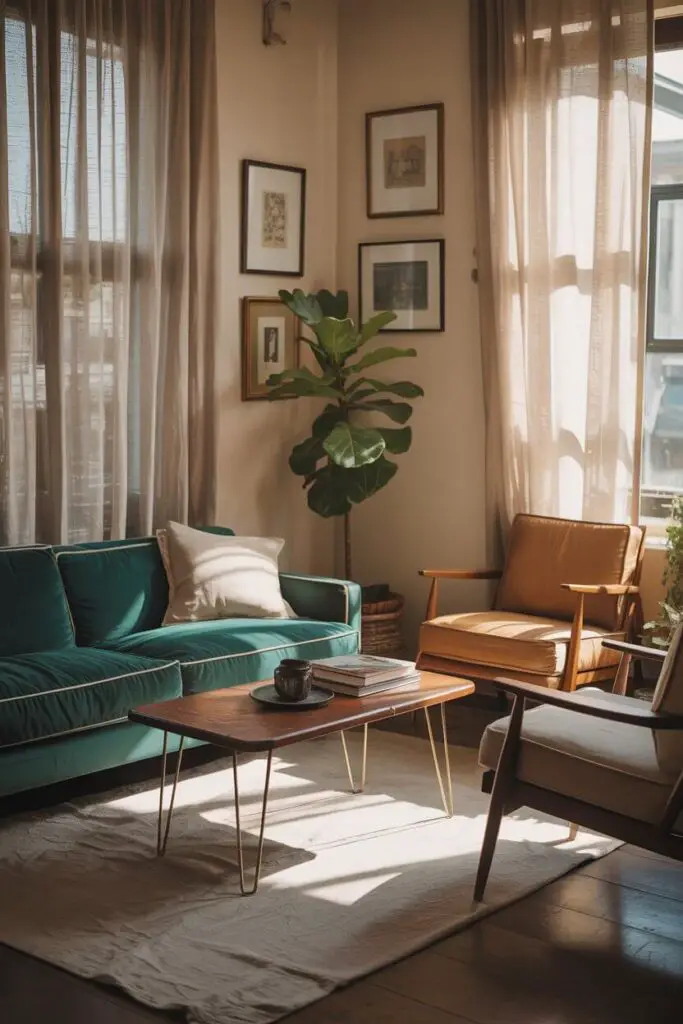
Find Your Anchor
Every eclectic room needs at least one unifying thread to keep it from feeling disjointed. This could be:
- A color palette (three to five shades that repeat throughout).
- A consistent material (like wood, brass, or linen).
- A common style detail (mid‑century legs, ornate carvings, minimalist lines).
When you have an anchor, you can go wild with other elements while keeping that subtle “these all belong to the same story” feeling.
2. Balance Proportions and Scale
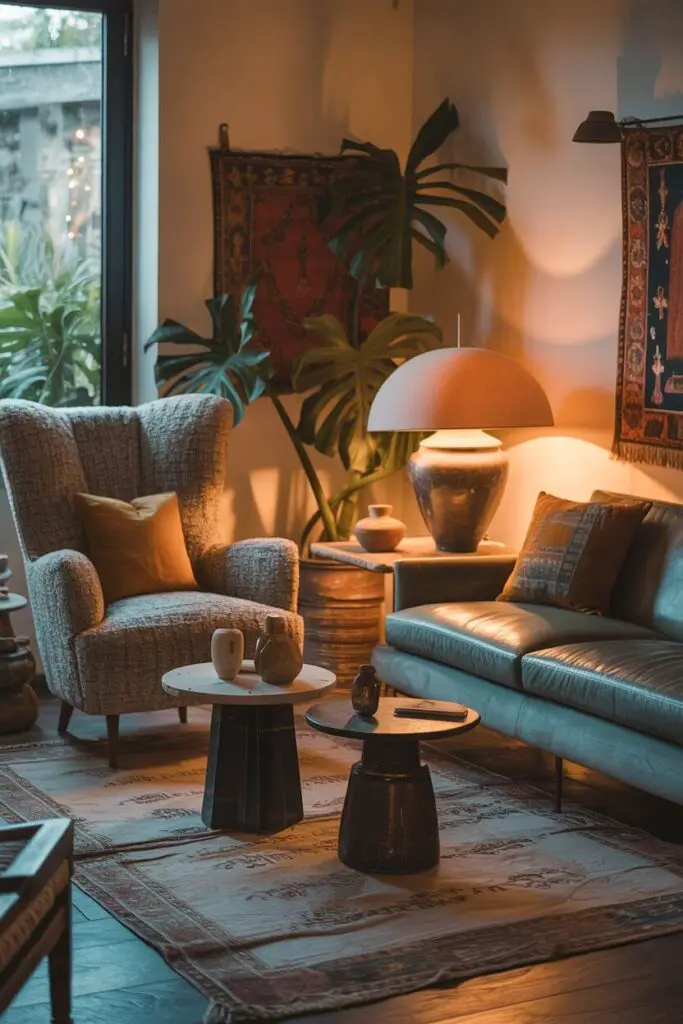
Why This Matters
You can have the coolest mix of furniture ever, but if the proportions are off, it’ll feel awkward.
Pairing a massive, overstuffed armchair with a spindly little side table? Awkward. Matching a sleek, low‑slung sofa with towering wingbacks? Weird power dynamics.
Pro tip: Mix shapes and sizes, but make sure each piece visually balances the others in height and volume. Think conversation, not competition.
3. Use a Controlled Color Palette
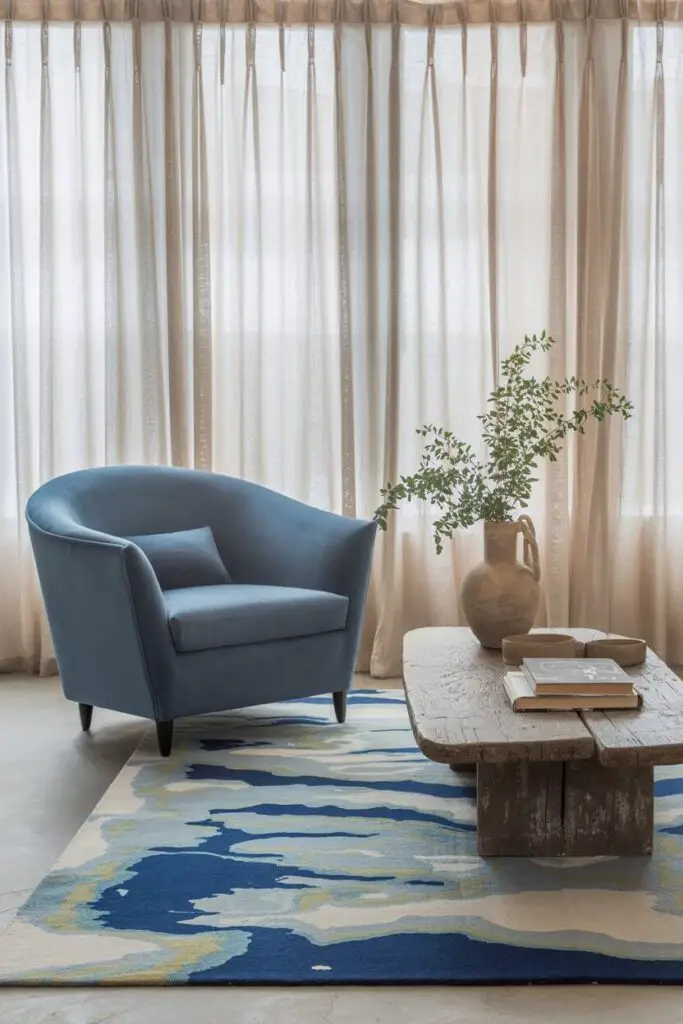
Color = Your Secret Weapon
Color is one of the easiest ways to pull unrelated pieces together.
You don’t have to go monochrome (unless that’s your jam), but repeating certain shades creates harmony.
Example: Pairing a jewel‑toned armchair with an abstract rug that shares that exact sapphire blue? Instant connection, even if the styles are completely different.
4. Mix Materials Like a Pro
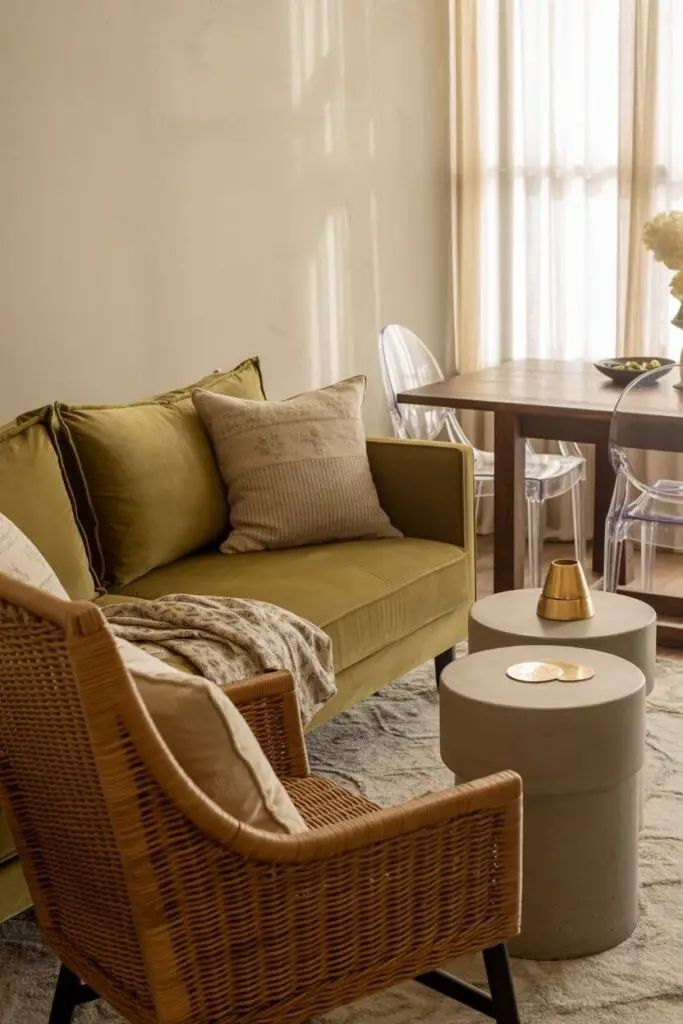
Layering Textures for Depth
Part of eclectic charm is contrast: smooth with rough, shiny with matte, soft with hard. Try:
- Velvet sofa + rattan armchair.
- Rustic wood dining table + modern acrylic chairs.
- Brass lighting + concrete side tables.
The trick? Repeat each material at least twice in the room so it feels intentional, not accidental.
5. Play with Patterns (But Set Some Ground Rules)
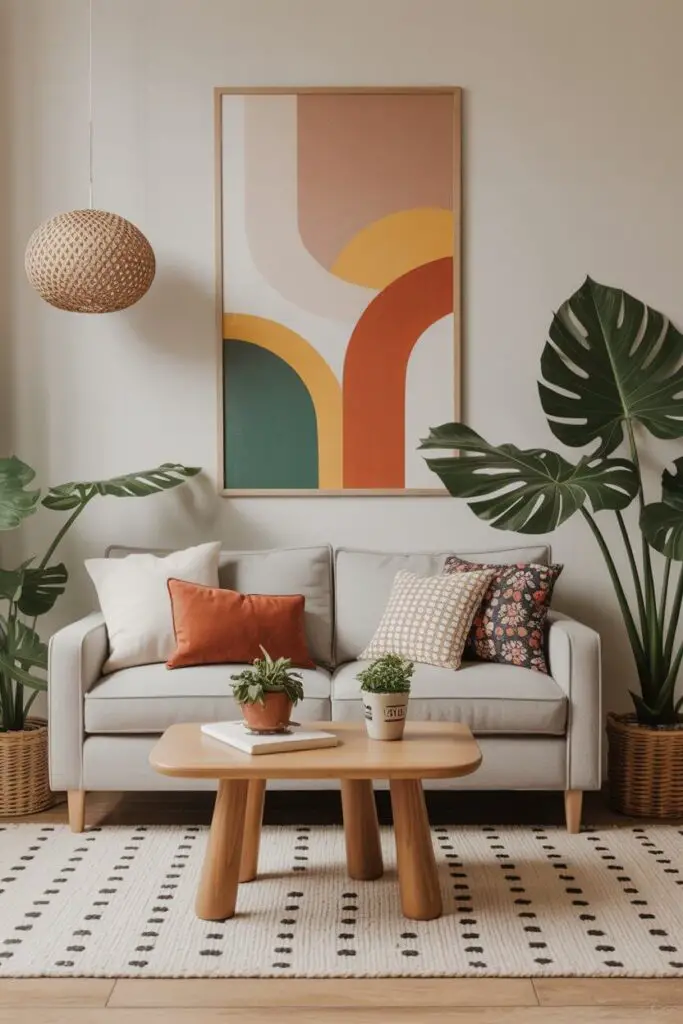
Avoid Pattern Overload
Patterns are an eclectic staple, but too many competing prints can overwhelm. A good formula:
- One bold pattern as the star.
- One or two supporting patterns that complement it in color or scale.
Pro tip: Vary the size of patterns. Large floral + small geometric = balanced. Large floral + large floral = eye strain.
6. Blend Old and New Pieces
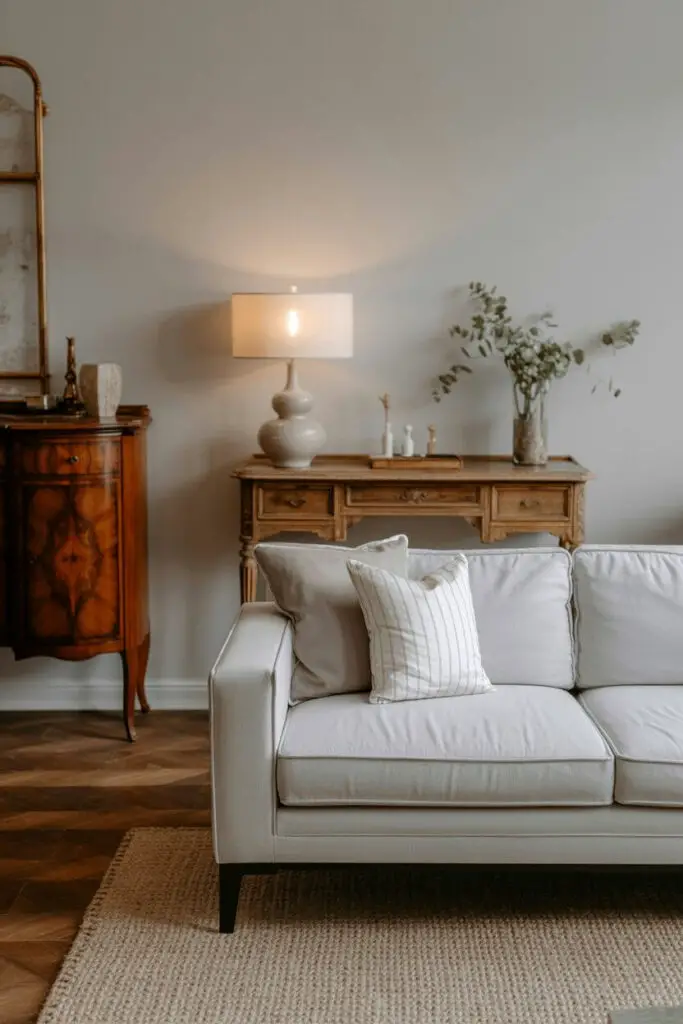
The Best of Both Worlds
Mixing eras creates instant character. Imagine a sleek modern sectional paired with a 1920s sideboard — the contrast makes each piece stand out more.
Personal favorite combo: An antique writing desk as a console table behind a contemporary sofa. It’s unexpected, functional, and conversation‑worthy.
7. Repeat Design Motifs
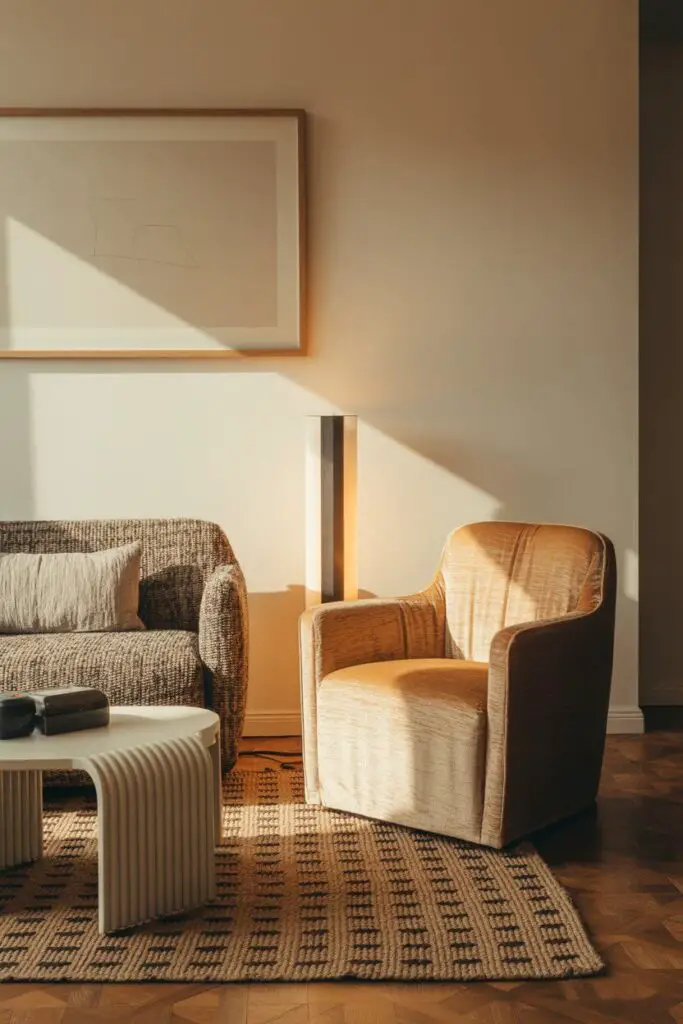
The Subtle Glue
Motifs are recurring shapes or details that quietly unify a room. Maybe it’s:
- Curved lines in a mirror, coffee table, and chair arms.
- Repeating black accents in lamp bases, frames, and textiles.
Your guests might not consciously notice, but their brains will register the harmony.
8. Create Visual Flow
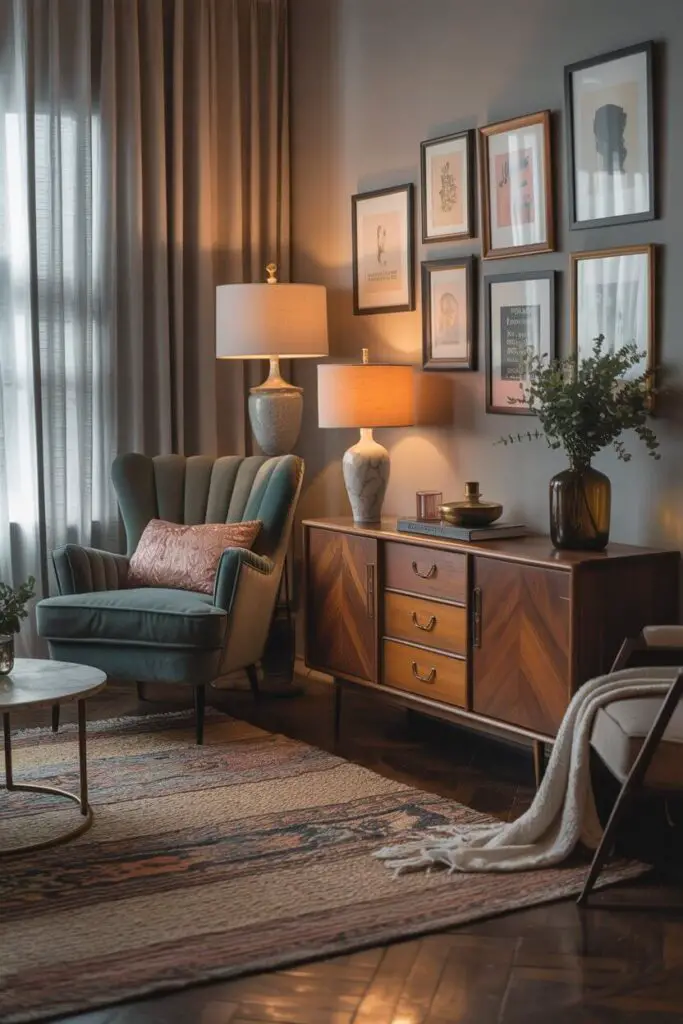
Arrange with Intention
In eclectic rooms, placement matters more than you think. Spread out statement pieces so the eye travels easily around the room rather than getting stuck in one corner.
Think of it like a playlist — you don’t want three high‑energy tracks in a row without a breather. Alternate bold with calm moments.
9. Layer in Accessories Thoughtfully
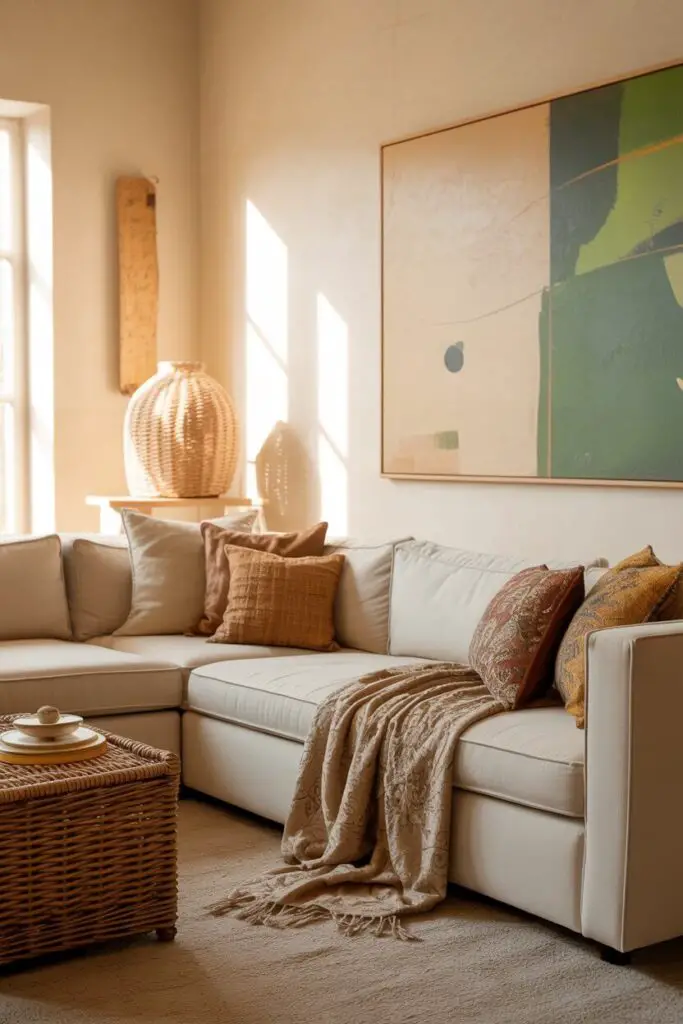
Accessories Make or Break the Look
Pillows, throws, art, and plants are the easiest way to bring cohesion. Choose accessories that pick up your anchor colors, materials, or motifs.
For example, a woven basket on one side of the room can echo the rattan in a chair across the space.
10. Edit (Yes, Edit) Your Choices
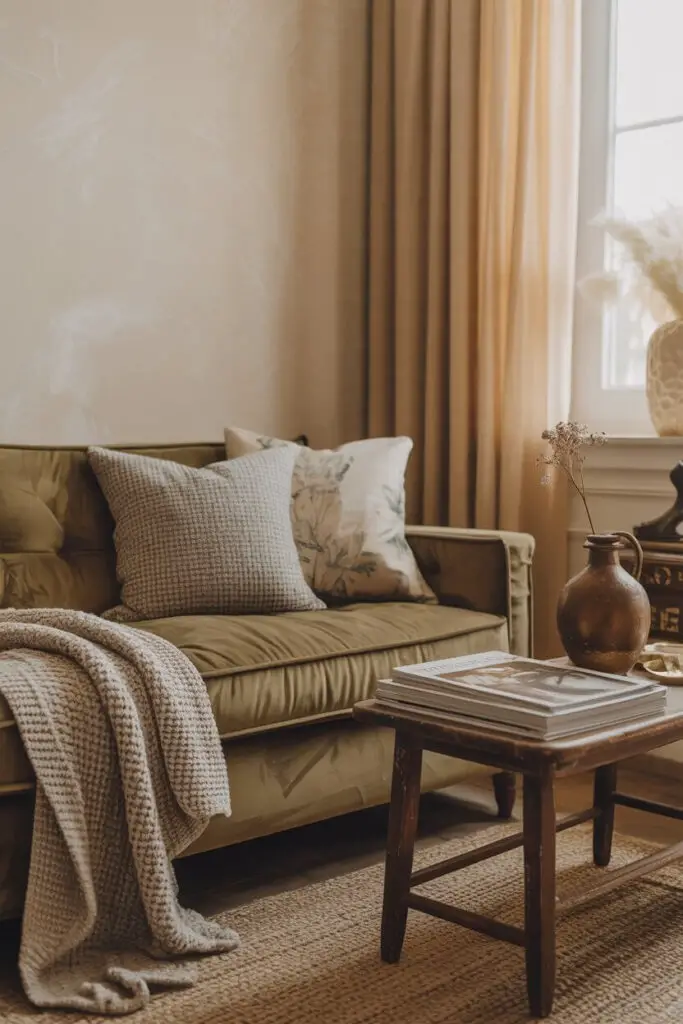
Less Is Often More
Eclectic doesn’t mean cramming every cool piece you own into one room. If a piece doesn’t contribute to your palette, balance, or story, move it elsewhere.
I once pulled a gorgeous leather ottoman out of a space because, despite being beautiful, it fought with everything else. The room instantly breathed easier.
11. Use Rugs to Define Zones
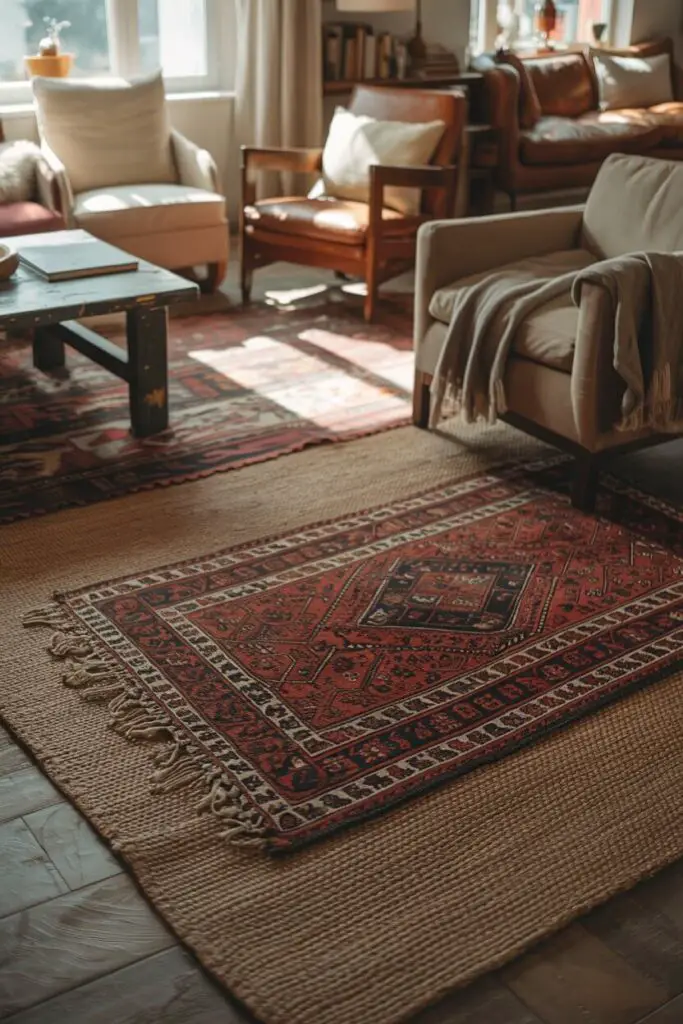
Function Meets Style
In an eclectic room, rugs are heroes. They anchor groupings of furniture, create zones in open layouts, and add another layer of texture or pattern.
Pro tip: Layer rugs for extra personality — a jute base with a smaller vintage Persian on top adds depth without chaos.
12. Embrace the “Odd Couple” Effect
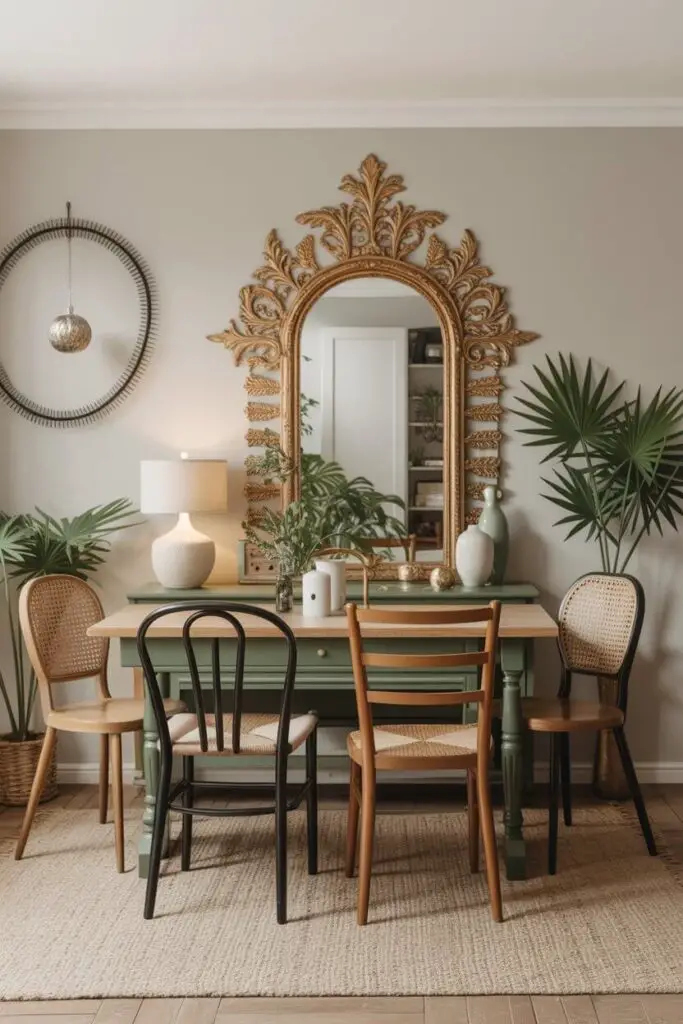
When Opposites Attract
Some of the best eclectic moments come from pairing opposites:
- An ornate gilded mirror over a minimal console.
- Industrial metal chairs around a farmhouse table.
The contrast makes each piece pop and stops the room from feeling predictable.
13. Trust Your Gut (and Your Eyes)
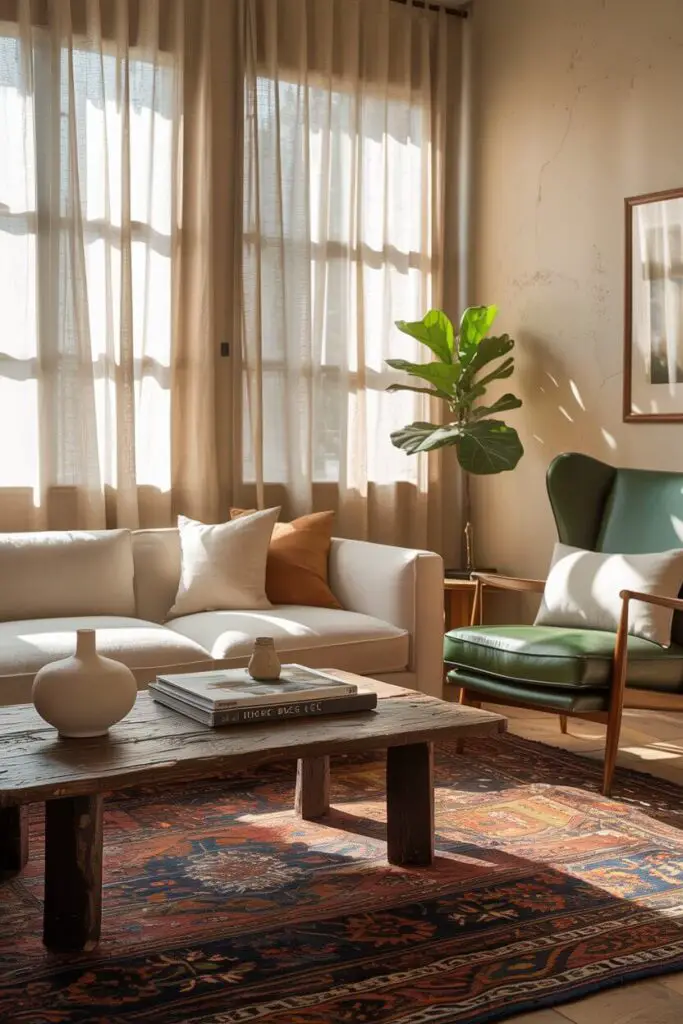
The Final Rule
At the end of the day, you’re the one living with it. If something makes you smile every time you see it, it probably belongs — even if it breaks a “rule.”
Stand back, squint, and see if the room feels balanced and inviting. If it does, you’ve nailed it.
Putting It All Together: Step‑by‑Step Eclectic Mix Checklist
- Pick your unifying element (color, material, style detail).
- Balance proportions — mix big and small, tall and low.
- Select your color palette and stick to it.
- Layer materials and repeat each at least twice.
- Curate patterns with one star and a couple of supporting acts.
- Blend old and new for character.
- Repeat motifs subtly across the room.
- Place statement pieces strategically for visual flow.
- Accessorize with purpose — tie back to your anchor elements.
- Edit ruthlessly — remove what doesn’t fit.
- Anchor zones with rugs for structure.
- Pair opposites for impact.
- Trust your gut — the most important step.
Conclusion: Eclectic, But Make It Cohesive
Learning how to mix and match eclectic furniture in a room isn’t about memorizing strict rules — it’s about knowing the guidelines that keep your creative freedom from tipping into chaos.
Remember:
- Start with cohesion (color, material, or motif).
- Balance proportion and scale like a pro.
- Layer textures, patterns, and eras to tell a story.
The beauty of eclectic style is that your room will never be a carbon copy of someone else’s. It’s personal, lived‑in, and brimming with your unique taste.
And IMO, there’s nothing more luxurious than walking into a room that feels exactly like you. 🙂